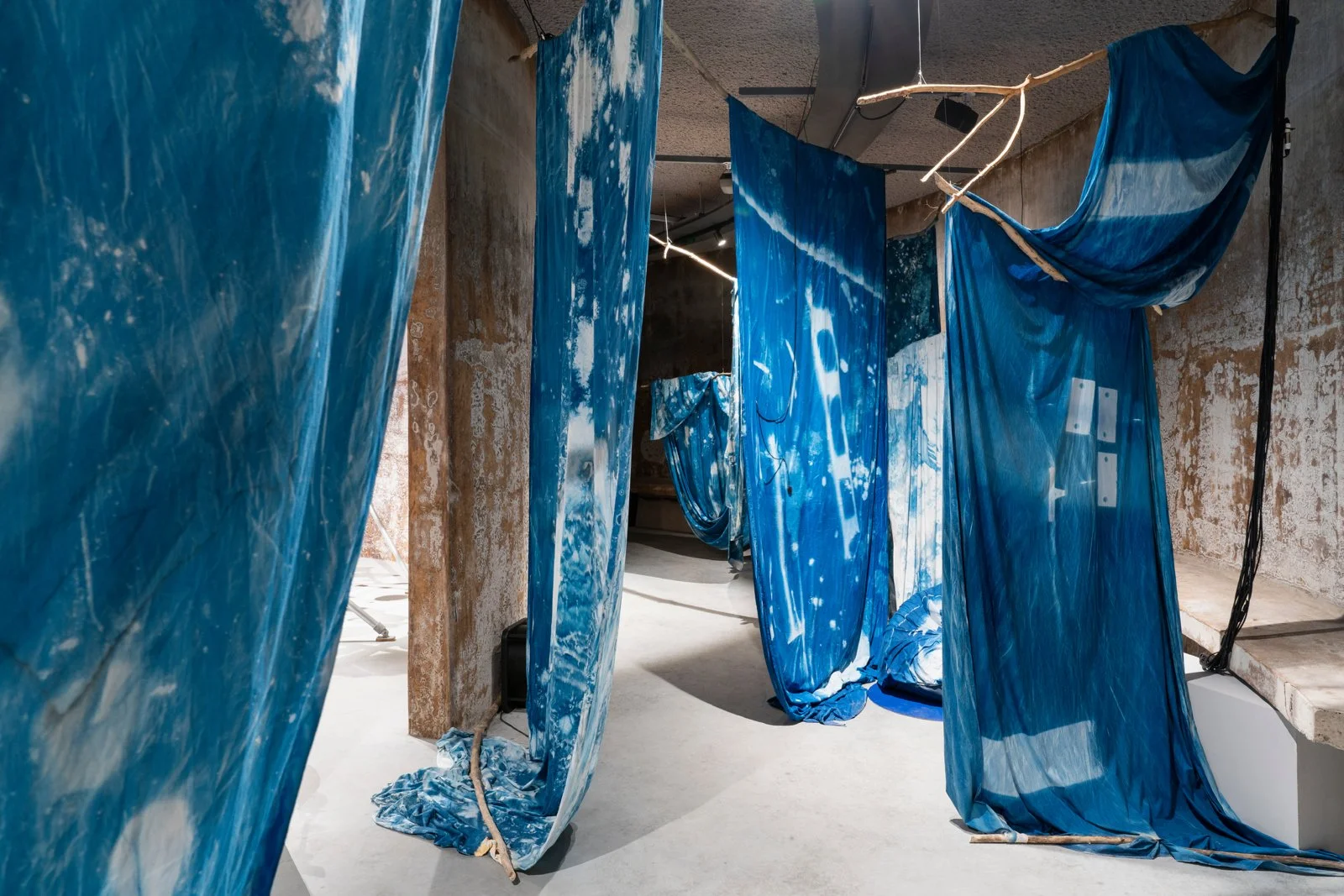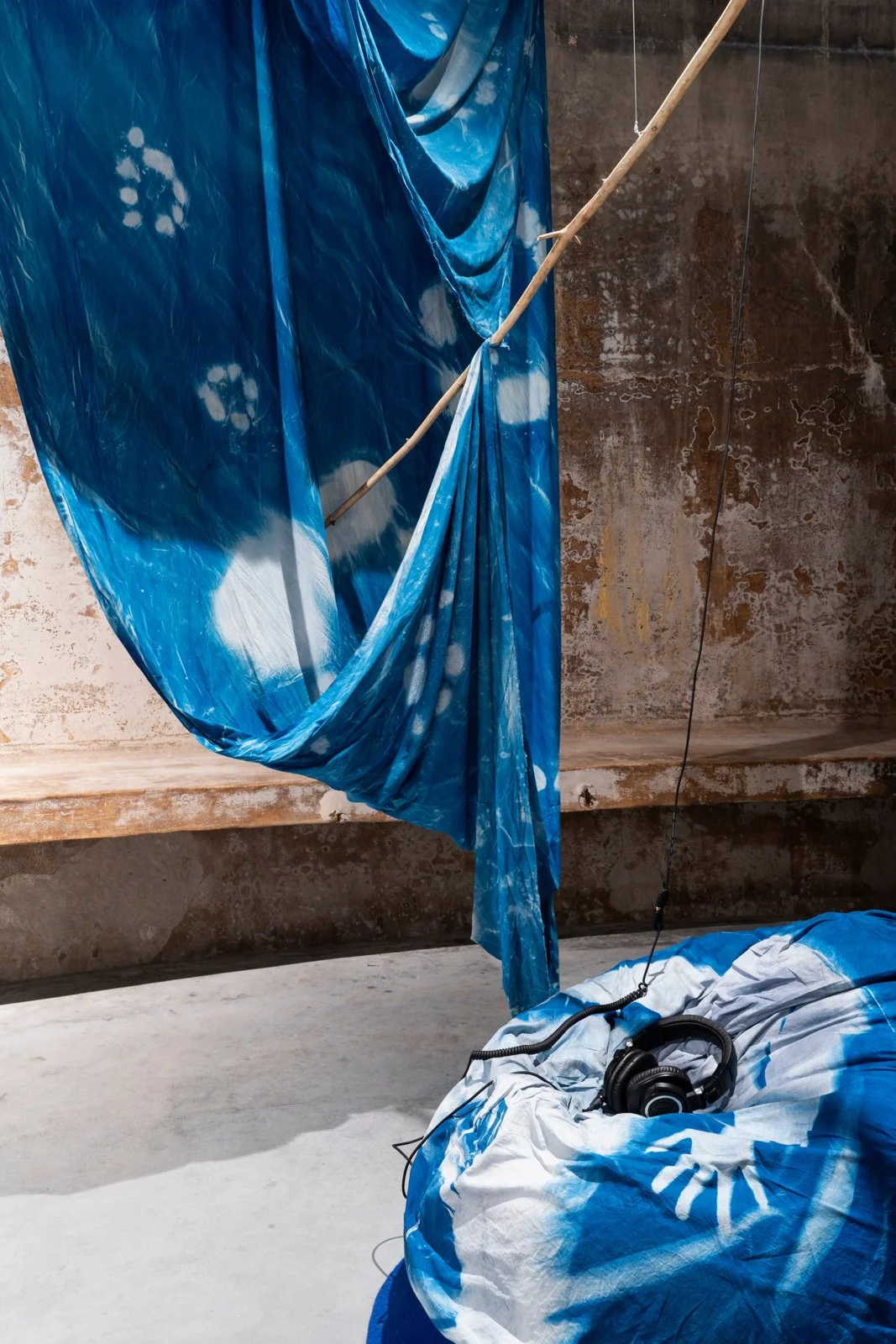The River Oracle is a collaboration between Paloma Ayala, Anne-Laure Franchette and Riikka Tauriainen, with sound by Kay Zhang and Melody Chua.
The projects originates from a a sun printing workshop guided by Anne-Laure Franchette during Paloma Ayala’s residency at Kaisersthul in 2020. Collectively printing plants, industrial waste, stones, wood and body parts in Kaiserstuhl’s market fountain, right by the old fishmonger’s stone, we discussed life and death, the four elements, destruction and preservation, self sufficiency and interdependence. Informed by Riikka Tauriainen’s tarot book, we sun printed 21 times. Prints were then turned into tarot cards, collectively decrypted and encrypted, finally paired with the tarot cards, providing an oracle for each participant. This first exchange gave way to months of collective experiments of printing, writing and recording around the Rhine river, exploring past, present and future of river ecologies and water uses, allowing for the creation of an interactive installation where soundscapes and stories get activated through touch.
The installation was first showcased at Radius CCA (Delft) then at Sedhalle (Zürich).
“Professor Astrida Neimanis states in her book Bodies of Water. Posthuman Feminist Phenomenology (Bloomsbury, 2017 that as watery bodies we are “never really autonomous […] we require other bodies of other waters (that in turn require other bodies and other waters to bathe us into being. Watery bodies are gestational milieus for another”.3 In pursuit of an artistic exploration of the porous relationships between human beings and other bodies of water, Paloma Ayala, Anne-Laure Franchette, and Riikka Tauriainen present a new version of their work River Oracle for RADIUS. The multimedia installation, in collaboration with Kay Zhang and Melody Chua for the sound composition, seeks to engage us with the ecologies of the river Rhine, which is proposed as an oracle to whom ask questions to build a deeper, situated self-reflection as watery, entangled beings.By embracing porosity as an agential means of relating, River Oracle sets alternative definitions of ‘human body’ in motion. Following a hydrofemi-nist approach, it undermines the dominant Western metaphysical description of the body as bounded by an anatomical and subjective individuality, whilst contemplating other ways for the human body to go beyond those boundaries and relate to other bodies—both human and nonhuman, both conceptually and materially–—through water. Textile, sound, and interactive media are dovetailed to summon a fig-uration of the river in a lyrical and tactile manner. Aquatic affinities are directed towards fairer ecological relationships. Perhaps attempting, ultimately, to con-sider answering the following question: “What does telling the story of humans in relation to more-than-humans in one way rather than another mean for how these stories will unfold?”. Sergi Rusca, RADIUS CCA
Read here the texts co-written together by Paloma Ayala, Riikka Tauriainen and myself : https://insert.art/ausgaben/senseabilities/river-story/ These texts were then recorded, mixed and physically activated by Kay Zhang and Melody Chua
Being with the dam is being in a complicated relationship. Humans living in the Rhine watersheds are profoundly tied to them, profoundly dependent on energy generation ventures, irrigation, transport and navigation apparatuses. Renewable energy generation is also a motor of proud national identities, an engineering achievement, a way of competing in the technological dimensions of human impact on Earth. The dam is a carrier of heritage and endurance as much as of power contests, and destruction. Much like other aquatic industrial infrastructures, dams are based on utilitarian understandings of planetary systems. River Oracle
In these times of sanitation obsession, cleaning practices have taken on unexpected prominence. Maintenance practices are closely linked to ecologies of care, often performed by womxn in private spaces and by low-wage workers in public spaces. But what is dirt? What is it that we want to wash away? Dust? Waste? Bodily fluids? What about fears, pains, insecurities? Do we get to flush them down the drain, too? But then where would they go? Should we wash our hands out of them? Or should we learn to responsibly let go without transferring our fears, insecurities and pain onto others? There is a profound need for another kind of care and renewal: one that allows us to perceive the value of the work of the people who maintain, as well as the need to stretch tentacles of care beyond the human. River Oracle
Pictures by Laura Rodriguez









